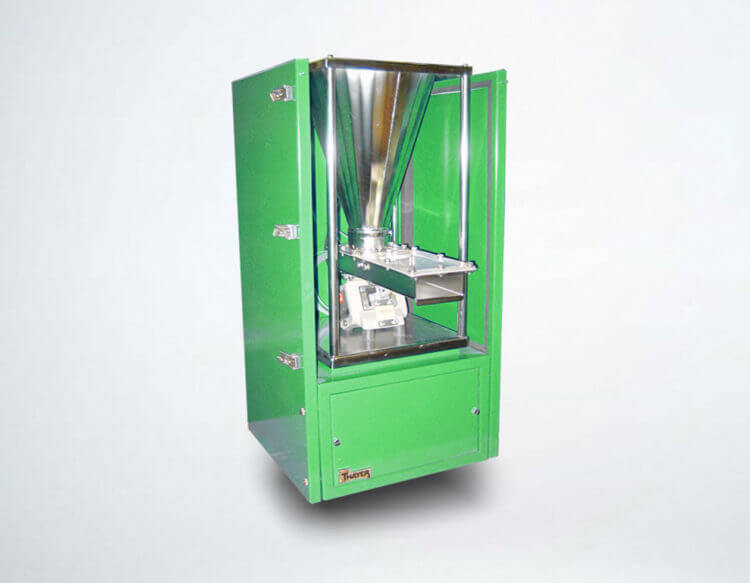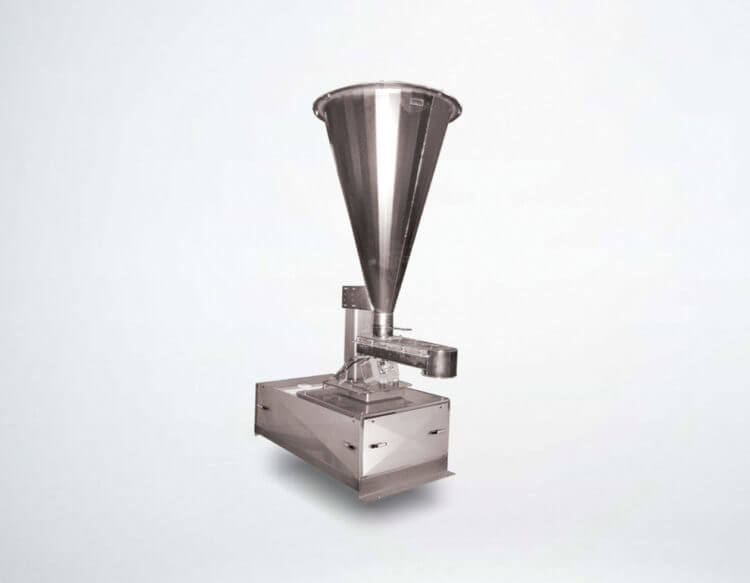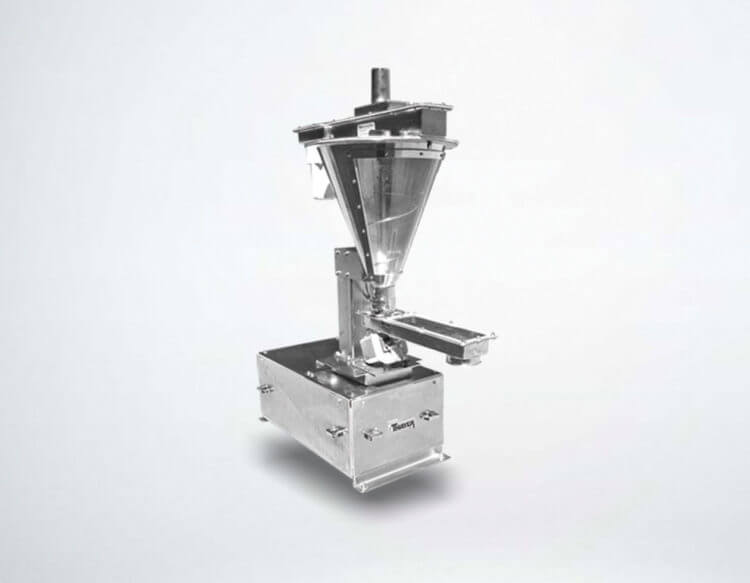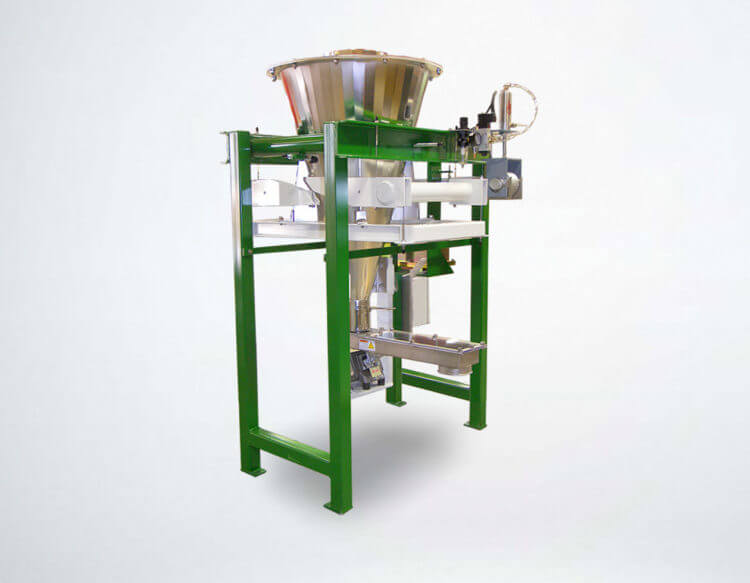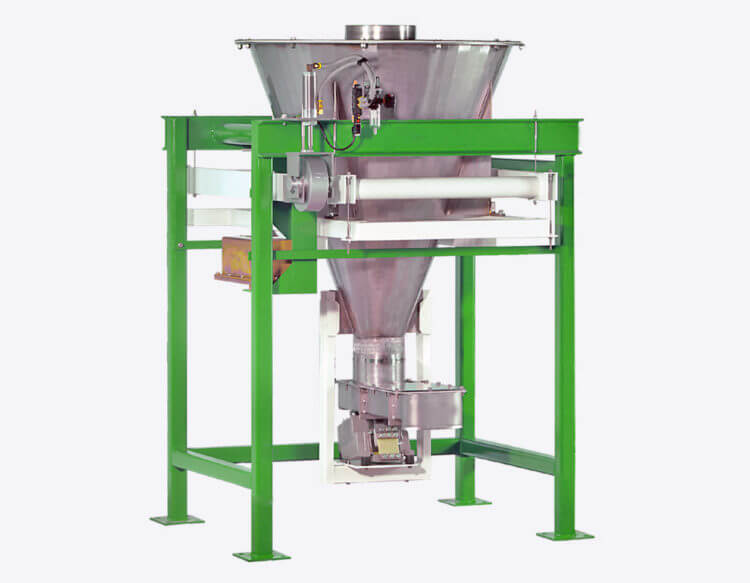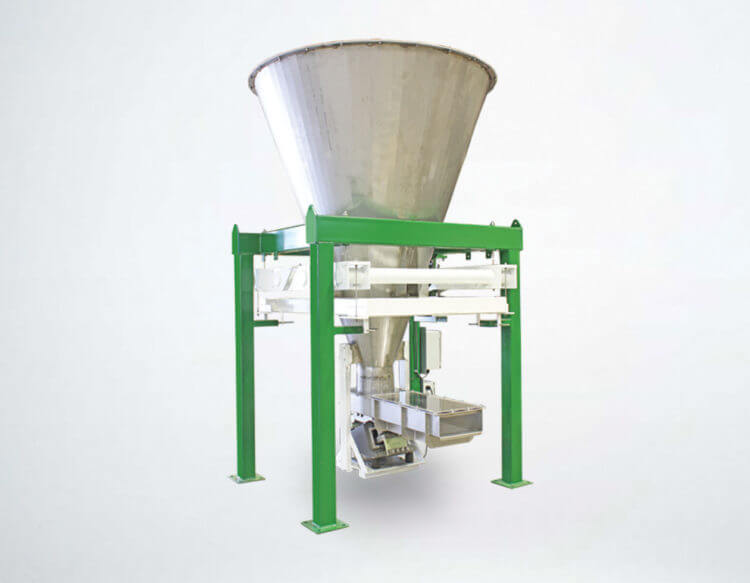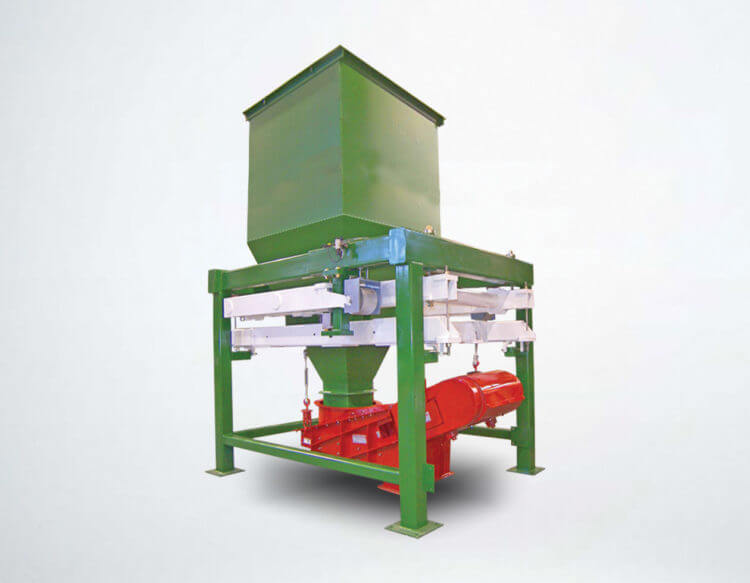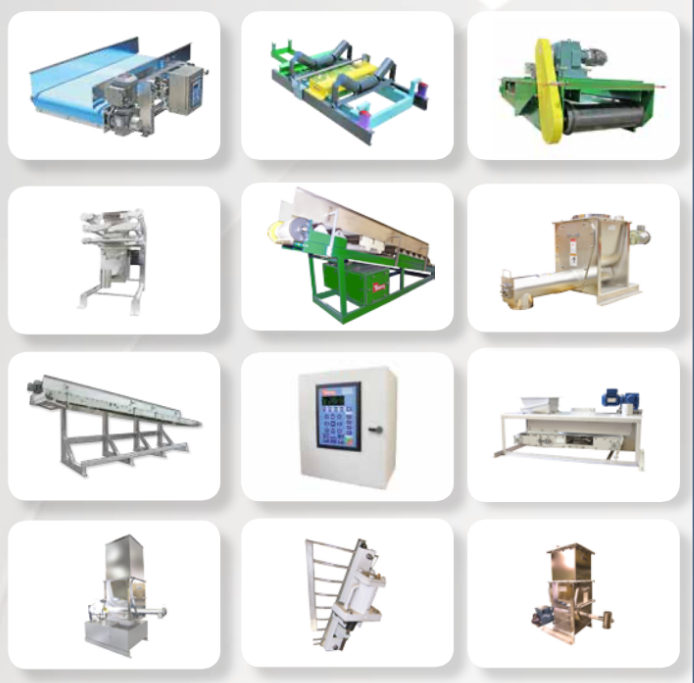Vibratory Feeder
Thayer Scale’s Loss-In-Weight Vibratory Feeder is designed to operate over a wide operating range, while assuring uniform, non-pulsating flow of difficult-to-discharge materials, such as fine cohesive powders or fragile interlocking particles of irregular shapes. A slowly rotating, non-agitating, conical wire-spiral within the hopper counteracts the material’s tendency to pack under its own weight by virtue of its “lifting” action throughout the stored material. The resulting reduction in consolidation pressures throughout the material mass assures that the stored material will not develop sufficient strength to form stable arches that can cause erratic flow or complete flow stoppage. The combination of this unique material conditioning system and a vibrating pan feeder assures that the material will be handled reliably and gently throughout the entire feeding range.
Vibratory Feeder Two Feed Tray Designs:
Standard mirror finished stainless steel tray used for non-cohesive pellets, granules, fibers and flakes.
Optional, Patented elastomer membrane vibrating tray insert for cohesive/adhesive powders.
Weight Measurement System
The heart of any gravimetric feeder is its scale system. Thayer Scales vibratory feeders incorporate a unique flexure suspension scale designed exclusively for use on Loss-In-Weight Feeders:
- High efficiency “dead load” counterbalancing
- Non-tilting platform design
- Tolerant of shocks and overloads
- Mechanical force “summing” to a single load sensor
- Full range sensor utilization = maximized resolution
- Low mechanical resonance frequency
- Flexure plate system eliminates all wearing parts, such as bearings, pivots and knife edges and is not susceptible to vibration. The flexure suspension system transfers all loading forces to a single load transducer, accurately measuring load regardless of load position. Most platform scales are not designed to be immune to side loading and/or torsional loading caused by the plant environment and by the movement of the feed screw, agitator, etc. These factors can cause poor accuracy and poor calibration stability. Thayer Scale’s flexure system cancels all horizontal force vectors and also allows heavy tare loads (weight of feeder and hopper) to be completely mass counterbalanced, permitting load cell sizing based on net rather than gross weight.
Vibratory Feeder Benefits
- Accurately measures load regardless of load position.
- Immune to support structure deflections and process vibrations.
- Inherently self-aligning to gravity.
- Nulls out heavy tare loads.
- 1,000% overload capacity.
- Scale may be suspended from above or supported below.
- Immune to shock or impact loads.
- Easily accessible load cell can be accessed without removing the feeder.
Two Types Load Cells to Choose From
The LVDT Load Cell was specifically developed as the ideal adjunct to Thayer Scale’s patented “reverse-action” Force Measurement Suspension System (FMSS). It is a precision and extremely durable “tension-style” force transducer manufactured in a fine series of force ranges to produce scale capacities from 10 to 500 lbs. depending on the application. The LVDT is the ideal load cell for “light loading” applications where mechanical tare loads represent as much as 10 to 40 times the net material load and provides unparalleled overload protection at 1000% of rated output.
Thayer Scale Strain Gauge Load Cell
The Strain Gauge Load Cell is available in force ranges from 25 to 500 lbs. with an overload protection of 300% of rated output.
FMSS Cable Scale Technology
The Thayer Scale patented FMSS Cable scale is the most rugged and “forgiving” Load Cell Weighing System available on the market. It can take more physical “abuse” and tolerate more foundation distortion/deflection than all other known designs.
The exclusive Thayer Scale FMSS Cable Suspension design provides exceptionally high sensitivity. Feeder “dead” load (feeder and weigh hopper) is mass-counterbalanced so that only material weight (live load) is measured. This feature helps assure excellent control in “noisy” environments.
All of the articulate parts of the scale mechanism are supported from “axially inextensible, but laterally yieldable” suspension elements (stainless steel pre-stressed aircraft cable, which are arranged to hang freely) vertically throughout their lengths under all operating conditions, thereby avoiding any appreciable spring or hysteresis effects, variations in mechanical advantage, or binding due to imperfect leveling.
Because of this unique mechanical property of the force transmission system, any laterally directed forces and shocks on the scale or its supported machinery cannot cause destructive shear and bending stresses to develop in the elements themselves or at the load cell junction. The system, being yieldable in the lateral direction, is therefore effectively and completely protected by using laterally placed “stops” in proximity of the weighed structure.
Weight loss measurement is done by either Thayer Scale’s LVDT Load Cell or NTEP approved strain gauge load cell depending on application requirements.
Calibration
Thayer Scale’s built-in Automatic Test Weight Lifter (ATWL) provides a means for automatically applying a known test load and going through a calibration sequence on a computer or push-button demand to check scale calibration. A “foolproof” self-checking software algorithm in the feeder control instrumentation prevents erroneous calibration.
The test weight calibration method has proven accurate and reliable over decades of in-plant use. Unlike material sampling, it is always clean, fast and safe. Unlike electronic signal simulation, it tests the performance of critical electro-mechanical components under the full deflection range of the load cell.
Showing all 7 results

